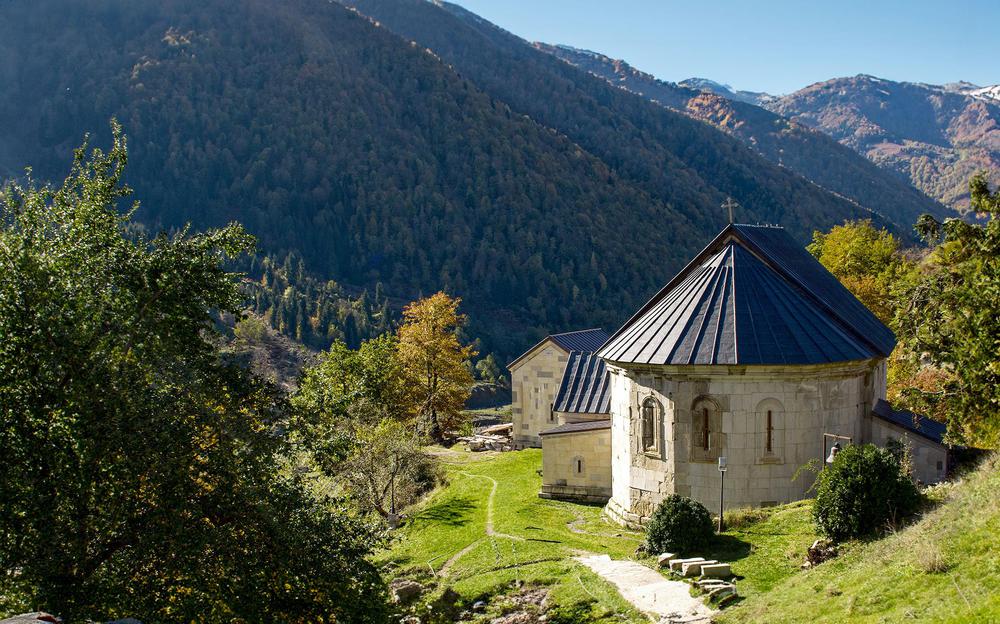In the picturesque setting of the Acharistsqali River Valley, near the town of Dandalo, you'll find the remarkable Dandalo Bridge. This medieval stone bridge, located 60 kilometers (approximately 37 miles) east of the bustling city of Batumi, is an icon of Georgian architecture and is officially recognized as a monument of national importance.
Dating back to the 11th-12th centuries, the Dandalo Bridge is a testament to the engineering prowess of the era. Built with locally-sourced stone, the bridge spans 20 meters (approximately 66 feet) in length. Its sturdy foundations on either side are anchored onto rocks, providing robust protection against the erosive forces of the river.
A standout feature of the Dandalo Bridge is its distinctive 'S' shape, reminiscent of the Latin letter. This innovative design adds an extra layer of complexity to the structure, as it results in the uneven distribution of load, presenting a unique engineering challenge for its medieval builders.
The bridge stands 8.5 meters (about 28 feet) above the river's surface, with the arch of the bridge being approximately 7.6 meters (nearly 25 feet) from the water's surface. This elevated view offers a breathtaking vista of the scenic river and its lush surroundings.
Two rows of holes on both sides of the arch, positioned 38 centimeters (approximately 15 inches) apart, offer a glimpse into the construction techniques employed during the bridge's creation. They are believed to have been used for scaffolding during the construction process, providing a historical footprint of the engineering practices of the time.
In 2006, the Dandalo Bridge was officially listed as an Immovable Cultural Monument of National Significance, cementing its place in Georgia's rich architectural heritage. Today, the bridge stands not only as a functional crossing over the Acharistsqali River but also as a symbol of Georgia's enduring legacy of architectural ingenuity and historical resilience.














